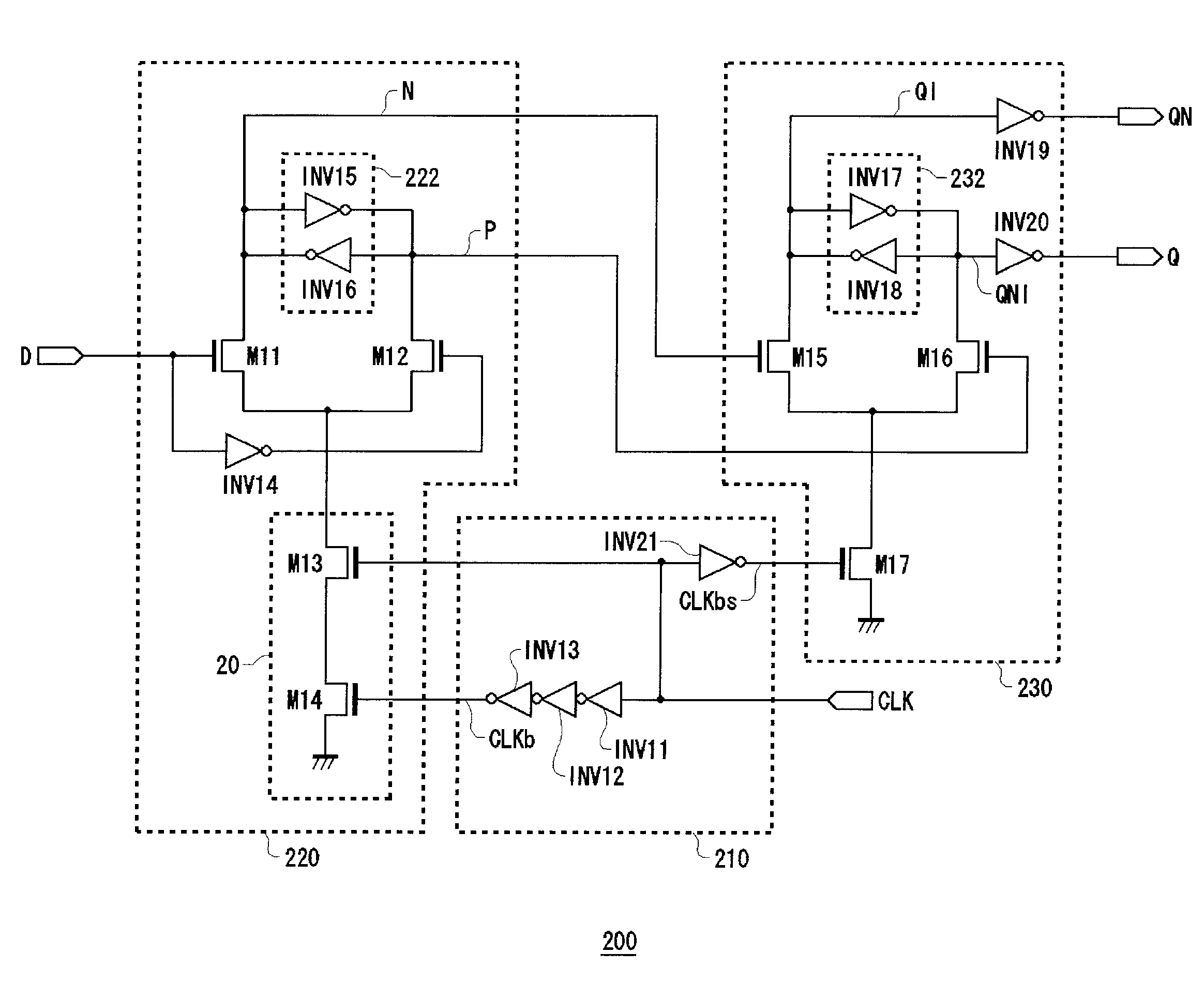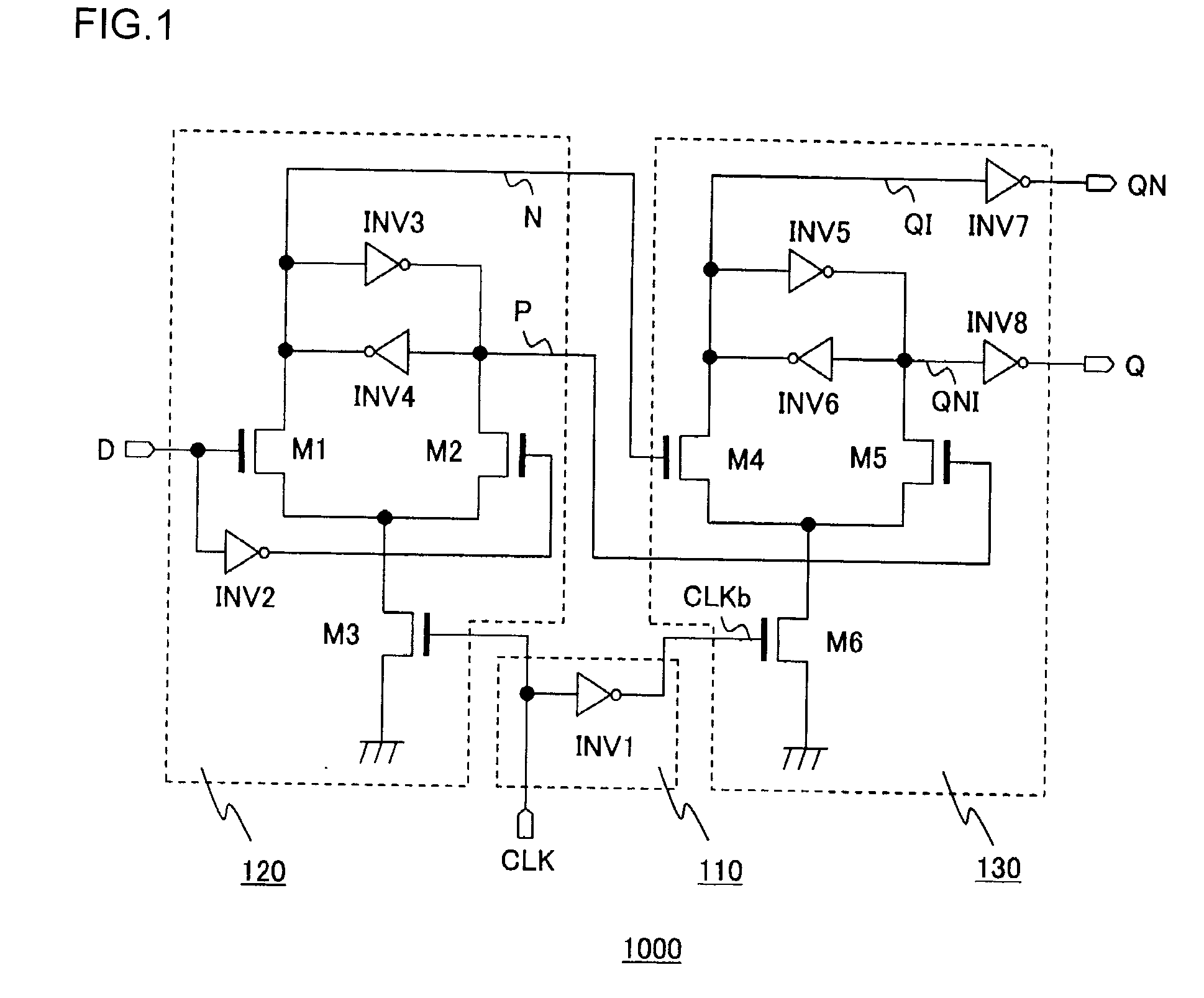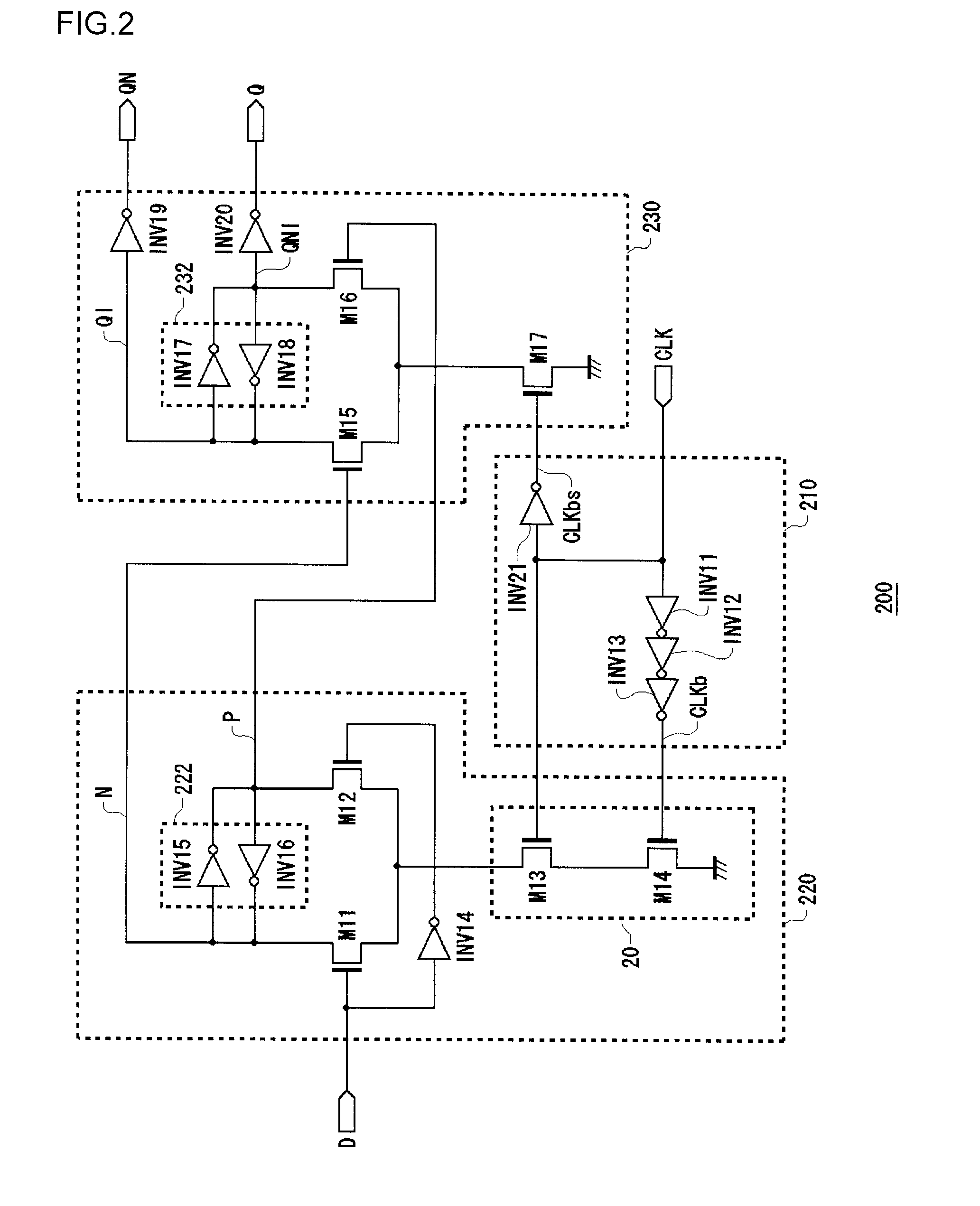Flip-flop circuit
a flip-flop circuit and circuit technology, applied in the field of flip-flop circuits, can solve the problems of increasing the hold time, consuming unwanted power, and prolonging the delay time until the data is outputted, so as to reduce the power consumption, suppress unwanted operations, and reduce power consumption
- Summary
- Abstract
- Description
- Claims
- Application Information
AI Technical Summary
Benefits of technology
Problems solved by technology
Method used
Image
Examples
first embodiment
[0048]FIG. 2 is a circuit diagram of a flip-flop 200 according to a first embodiment of the present invention. A low-amplitude clock CLK and input data D are inputted to a flip-flop 200. The flip-flop 200 outputs output data Q and inverted output data QN. The low-amplitude clock CLK is a clock that oscillates at a voltage whose level is lower than a supply voltage. The flip-flop 200 takes in the input data D in synchronism with the low-amplitude clock CLK, outputs the thus taken-in data as the output data Q and outputs the inverted data thereof as inverted output data QN. The flip-flop 200 includes a clock control circuit 210, a master latch circuit 220 and a slave latch circuit 230.
[0049]The clock control circuit 210 includes an inverter INV 11, an inverter INV12 and an inverter INV13, which are connected in series to each other. An input terminal of the inverter INV13 is connected to the low-amplitude clock CLK. A voltage lower than a supply voltage is applied to the inverter INV1...
second embodiment
[0093]FIG. 7 is a circuit diagram showing a structure of a flip-flop circuit 100 according to a second embodiment of the present invention. As input / output terminals, the flip-flop circuit 100 includes an input terminal 102 to which input data D are inputted, an output terminal 104 from which an output signal Q is outputted, an inverted output terminal 106 from which an inverted output signal *Q is outputted, and a clock terminal 108 to which a clock signal CK is inputted. According to this second embodiment, the inversion of a given logical signal, namely its complementary level is denoted by*. This flip-flop circuit 100 latches the input data D based on the clock signal CK and then outputs the output signal Q and the inverted output signal *Q.
[0094]The flip-flop circuit 100 includes a latch circuit 10 and a clock control circuit 30.
[0095]The latch circuit 10 is a circuit for storing the input data D, and it includes a pair of transistors 12, an input inverter 14, internal inverter...
PUM
 Login to View More
Login to View More Abstract
Description
Claims
Application Information
 Login to View More
Login to View More - R&D
- Intellectual Property
- Life Sciences
- Materials
- Tech Scout
- Unparalleled Data Quality
- Higher Quality Content
- 60% Fewer Hallucinations
Browse by: Latest US Patents, China's latest patents, Technical Efficacy Thesaurus, Application Domain, Technology Topic, Popular Technical Reports.
© 2025 PatSnap. All rights reserved.Legal|Privacy policy|Modern Slavery Act Transparency Statement|Sitemap|About US| Contact US: help@patsnap.com



